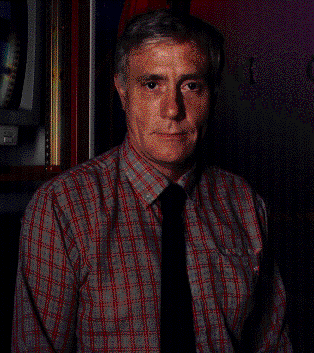

Donald E. Parker, Ph.D.
After working for 40 years as a scientist and professor, I've
accumulated numerous titles currently including: Affiliate Professor,
Department of Otolaryngology - Head and Neck Surgery, University
of Washington, Faculty Associate, Human Interface Technology Laboratory,
University of Washington; Professor Emeritus, Department of Psychology,
Miami University, Ohio.
Honors that I've received include the Space Act Award in 1993,
election to membership in the International Academy of Astronautics
in 1985 and selection as Alternate Payload Specialist for Spacelab
SL-1 Mission in 1978.
I've devoted most of my career to studying
responses evoked by vestibular and auditory stimulation With colleagues
at Johnson Space Center, I examined eye movements and perceived
self-motion following prolonged exposure to microgravity and was
the first to report that perceived self-translation can be elicited
by roll or pitch head motions during landing and immediately postflight.
These observations led to the tilt-translation reinterpretation
model of sensory-motion adaptation to weightlessness and to development
of apparatus, the Tilt-Translation Device and procedures to "preadapt"
astronauts to some features of the stimulus rearrangement experienced
during weightless space flight. Current Research Interests
I'm currently attempting to develop materials
and procedures for assessing vestibular contributions to spatial
cognition. My recent research has focused on self-motion perception
reporting.In a study published in 1998, my colleagues
and I found that self-motion reports were not superior
using animations relative to those recorded when subjects selected
from written descriptions. In order to implement that study, all
subjects were trained to use a self-motion vocabulary. Failure
to observe an advantage for the animation procedure may have been
due to the vocabulary training. Phillips and I (Parker & Phillips,
1999) recently described a new procedure for assessing self-motion
perception using real-time computer-generated animations. This
procedure doesn't require the motion vocabulary training used
earlier. Following cross coupled angular acceleration, we observed
vertical eye movements in the expected direction; however, perceived
self-motion was in the expected direction only for about 50% of
trials. It's important to note that self-motion assessed by real-time
computer animations was quite reliable (r > 0.8). Use of perceptual
procedures to facilitate assessment of patients who suffer from
equilibrium system disturbance is in its infancy. We have developed
what appears to be a reliable and valid procedure for examining
complex self-motion. Dr. Phillips and I plan to compare eye movement
and self-motion perception assessments in adults and children
who suffer from balance disorders.
A second line of research examines visual-vestibular interaction.
Using a cross-over procedure developed with former graduate students
Dr. Ted Carpenter-Smith and Dr. Jerry Prothero, we can examine
the relative influence of visual and inertial cues on perceived
self-motion. Preliminary observations suggest that we may be able
to detect response asymmetries, which would allow us to identify
whether the left or right horizontal semicircular canal is damaged.
If the procedure works for horizontal canals, extension to vertical
canal assessment, which is very difficult using currently available
procedures, is quite likely. The cross-over asymmetry procedure
holds a promise for significant clinical applications
Finally, in response to documented cases of astronauts experiencing
disorientation in space, Dr. Max Wells and I have submitted a
proposal to NASA for development of "Virtual Gravity"
(VRg). One instantiation of VRg would use a see-through head-mounted
display (HMD), wireless communication, and a body-worn computer
to overlay a space-stabilized independent visual background over
a portion of the wearer's field-of-view. Our first goal will be
to evaluate VRg in virtual mazes that permit some orientation
disturbances similar to those encountered in microgravity.
Current Research Support
NASA Grant NAG5-407, Self -motion perception
assessed by computer-made animations.
|